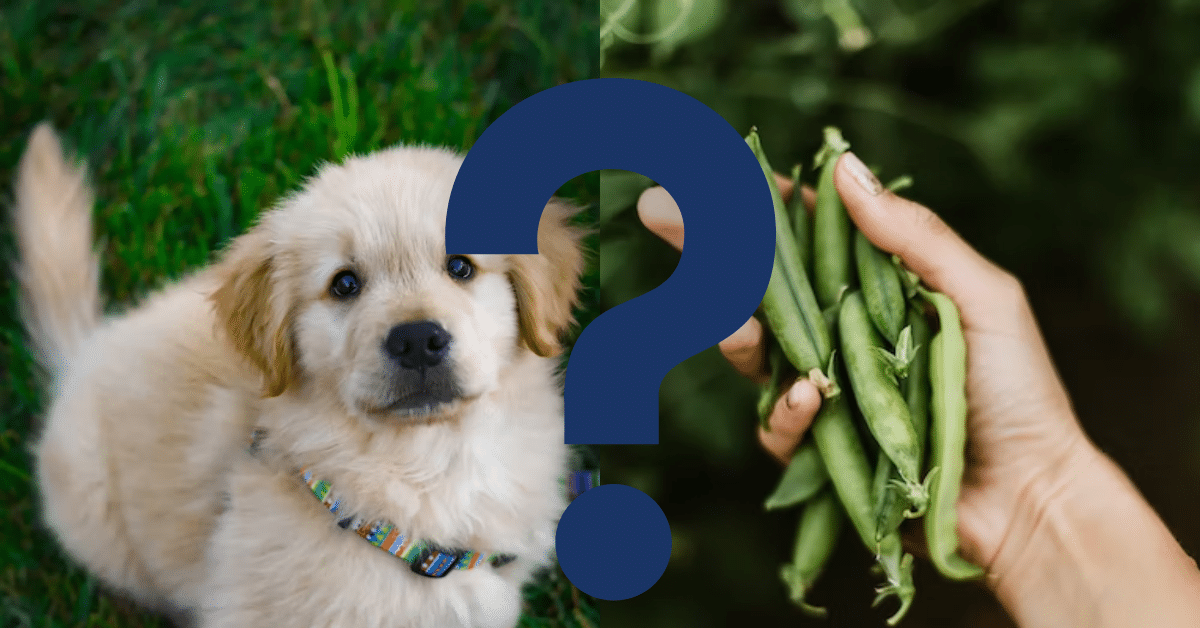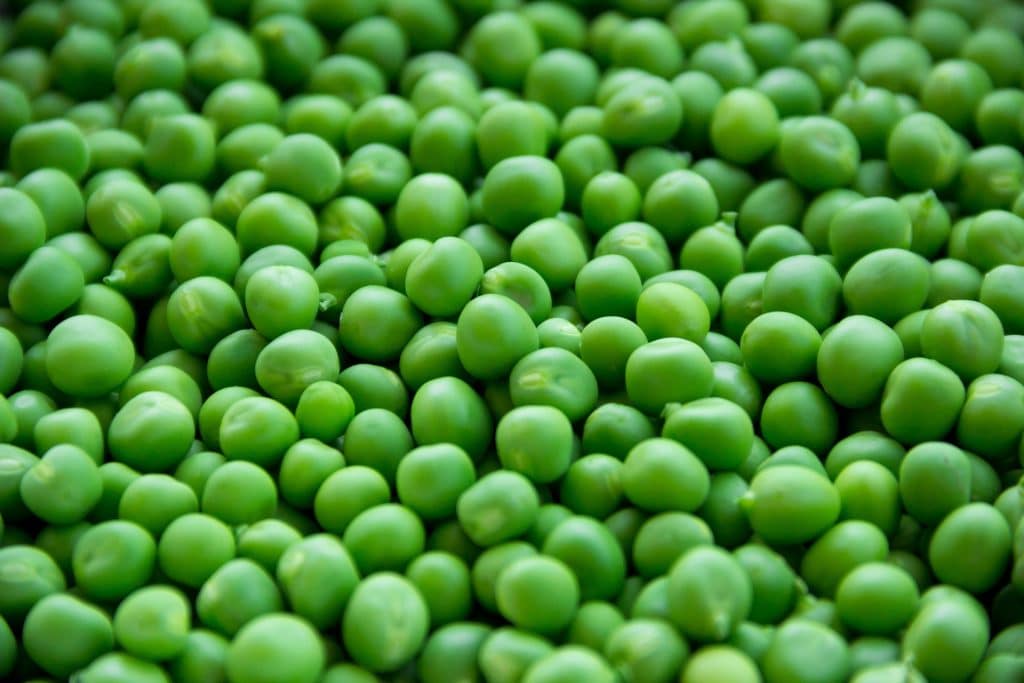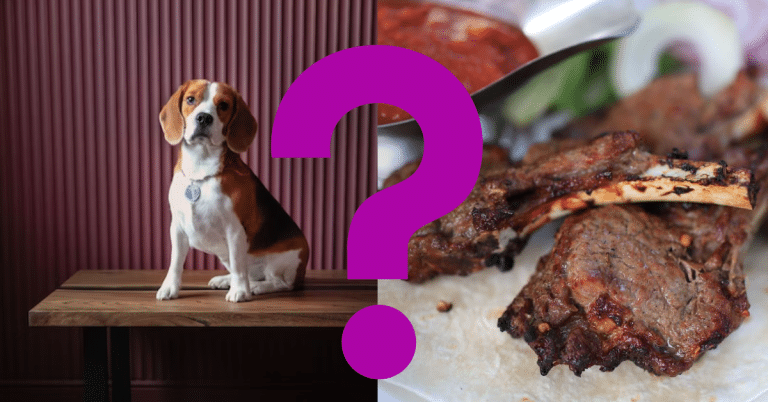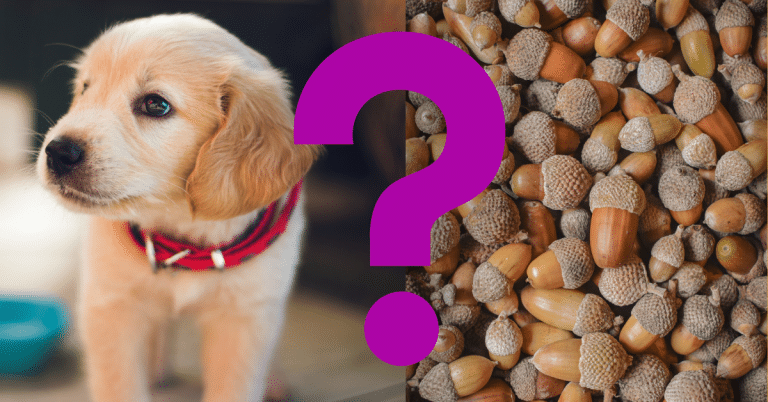Can Dogs Eat Peas? A Vet’s Opinion

Peas are a great source of dietary fiber, but can you feed peas to your dog?
Peas are edible to dogs! In reality, peas can help dogs’ health in several ways. They are an excellent source of fiber, protein, vitamins, and minerals and can help support overall well-being by promoting digestive health.
Benefits Of Peas For Dogs
Here is a more thorough breakdown of the advantages of peas for dogs:
- High in dietary fiber: Dietary fiber is essential for a healthy digestive tract and is abundant in peas. By transporting food through the digestive system, encouraging regular bowel movements, and reducing constipation, fiber aids digestion regulation. Fiber can also help control blood sugar levels and decrease cholesterol.
- Peas are a rich source of plant-based protein, which is advantageous for dogs with dietary allergies or intolerances to animal proteins. Pea protein is an excellent source of protein for active dogs since it is also quickly digested and contains crucial amino acids for maintaining and rebuilding muscular tissue.
- Low in fat: Dogs that need to maintain a healthy weight or are prone to obesity may benefit from eating low-fat foods like peas. An excessive amount of fat in a dog’s diet can result in weight gain, which can bring on heart disease, joint difficulties, and other health concerns.
- Peas are a rich source of vitamins and minerals necessary for good health overall. For instance, vitamin C is an antioxidant that helps prevent cell damage, but vitamin K is required for blood clotting. Iron is vital for synthesizing red blood cells, while potassium is crucial for maintaining a healthy fluid balance.
- Peas are a good source of antioxidants, which help guard against illness and cell deterioration. Free radicals are dangerous chemicals that may destroy cells and lead to the emergence of cancer, heart disease, and other health issues. Antioxidants can aid in the neutralization of free radicals. Antioxidants can also boost the immune system, assisting dogs in warding against infections and other diseases.
- Reduced allergenic potential: As peas are hypoallergenic, dogs are less prone to develop allergies. Therefore, they are the perfect meal for dogs with food allergies or sensitivities.
- Dental health: Peas’ crunchy texture can help dogs improve dental health by removing plaque and tartar on their teeth. This can guard against tooth decay, gum disease, and foul breath.
- Weight management: Peas are a great meal option for dogs that need to lose or keep their weight within a healthy range because they are low in calories and fat. Dogs can feel whole and pleased without overindulging in calories by eating peas as a low-calorie treat or in their meals.
- Enhanced skin and coat: Vitamins and minerals in peas can make a dog’s skin and coat look and feel healthier. For instance, vitamin C helps promote the creation of collagen, which can increase skin flexibility and lessen wrinkles. Omega-3 fatty acids, which are included in peas, can also aid in reducing inflammation and promoting healthy skin and fur.
- Peas may provide taste and diversity to a dog’s diet by being added to their food. Preventing boredom, which can result in picky eating habits, helps keep dogs interested in their food.
Although peas are typically considered safe for dogs, it is essential to remember that they should only be given in moderation and as part of a balanced diet. Peas can disturb a dog’s digestive system, resulting in gas, bloating, and diarrhea in some instances, especially if served in significant quantities. Speaking with your veterinarian before making any nutritional changes is always recommended.

How To Safely Give Peas To Dogs?
Here are some guidelines for safely including peas in your dog’s diet:
- Introducing peas gradually is the best action if your dog has never eaten them. Your dog’s reaction will be determined by adding a small number of peas to its regular diet. Stop giving your dog peas if they exhibit symptoms of digestive distress, such as diarrhea or vomiting, and call your vet.
- The prevailing consensus is that peas should be cooked before being given to your dog. Heating peas makes them more palatable and can lessen the risk of intestinal distress. The best methods for cooking peas are to boil, steam, or microwave them.
- While being acceptable for dogs to consume, canned peas can be rich in salt and chemicals. Fresh or frozen peas are preferable since they have less sodium and chemicals.
- Feed peas sparingly: As part of a balanced diet, peas should be eaten sparingly. Peas can upset your stomach if you overeat them, and dogs with kidney issues may have trouble with the high potassium level in peas. Depending on the specific nutritional requirements of your dog, a veterinarian can assist in determining how many peas to feed them.
- Consider utilizing it as a topping or treat: Peas may be added to your dog’s regular meal or used as a nutritious treat. This can give their diet more diversity and give them some of the nutritional advantages of peas without putting too much strain on their digestive system.
When introducing peas to your dog’s diet, you should speak with your veterinarian, as with any new food. They may advise you on how much to feed your dog and help you decide if peas are a good choice for them.
Will Peas Make A Dog Sick?
Although peas are usually considered safe for dogs to consume, some dogs may react differently to them than others, just like with any new meal. Feeding your dog too many peas or introducing them to their diet too rapidly might disturb their digestive system and result in gas, bloating, or diarrhea. Moreover, dogs with renal issues should avoid peas’ high potassium content.
It’s crucial to introduce peas and watch your dog’s reaction gradually. Start with a tiny serving of peas and watch for any indications of digestive distress. You may gradually increase the quantity you feed your dog’s peas if they accept them well. Stop giving your dog peas if they are experiencing stomach distress, and call your vet.
Peas are typically safe for dogs but should only be given occasionally as part of a balanced diet. Overfeeding peas might result in nutrient imbalances and other health issues. Speaking with your veterinarian before making any nutritional changes is always recommended.

Vet’s Summary
Peas are a wholesome meal that may benefit dogs in several ways. They are an excellent source of vitamins, minerals, protein, and fiber. Peas are a healthy food option for dogs that need to reduce or maintain a healthy weight since they are low in fat and calories. They are also hypoallergenic, making them a suitable choice for dogs with food allergies or sensitivities. Peas can aid in maintaining dental health by massaging gums and cleansing teeth. Because of their high quantities of antioxidants and anti-inflammatory effects, they can help enhance skin and coat health. Peas add taste and diversity to a dog’s diet, enhancing the dining experience. But, it’s crucial to introduce peas to dogs gradually, prepare them before giving, avoid canned peas, offer them sparingly, and speak to a veterinarian before making any significant dietary changes for a dog.
Regarding the link to dog probiotics, probiotics are advantageous microorganisms that can strengthen a dog’s immune and digestive systems. Giving dogs a meal high in fiber, like peas, can aid in fostering the growth of beneficial gut flora and enhance digestive health. Some commercial dog diets even include probiotics and prebiotics (food for probiotics) to maintain digestive health. You must speak with your veterinarian about the ideal probiotic supplement to add probiotics to your dog’s diet.
Videos To Watch
Are you curious if your dog can eat peas? Well, watch these videos to find out:






